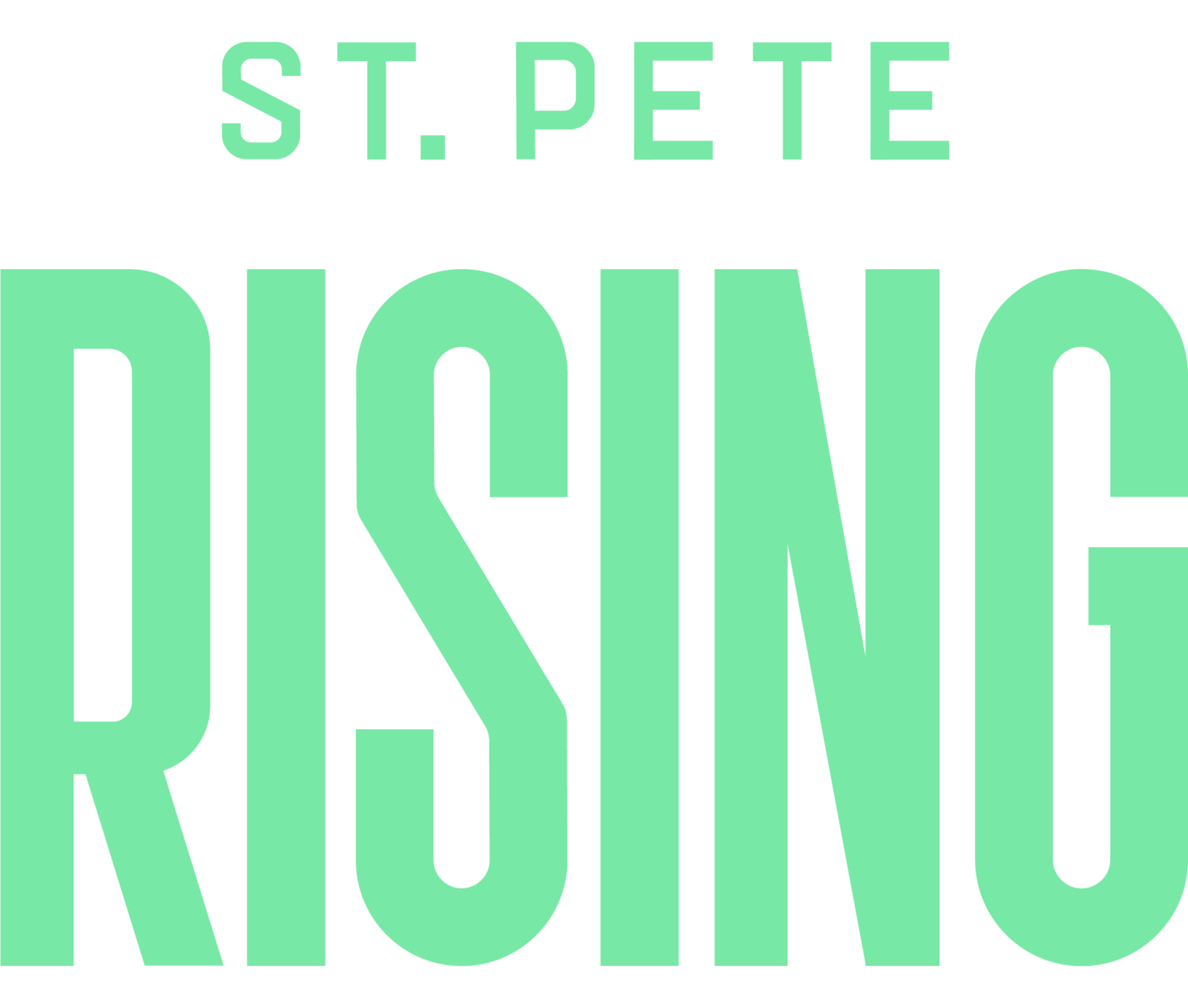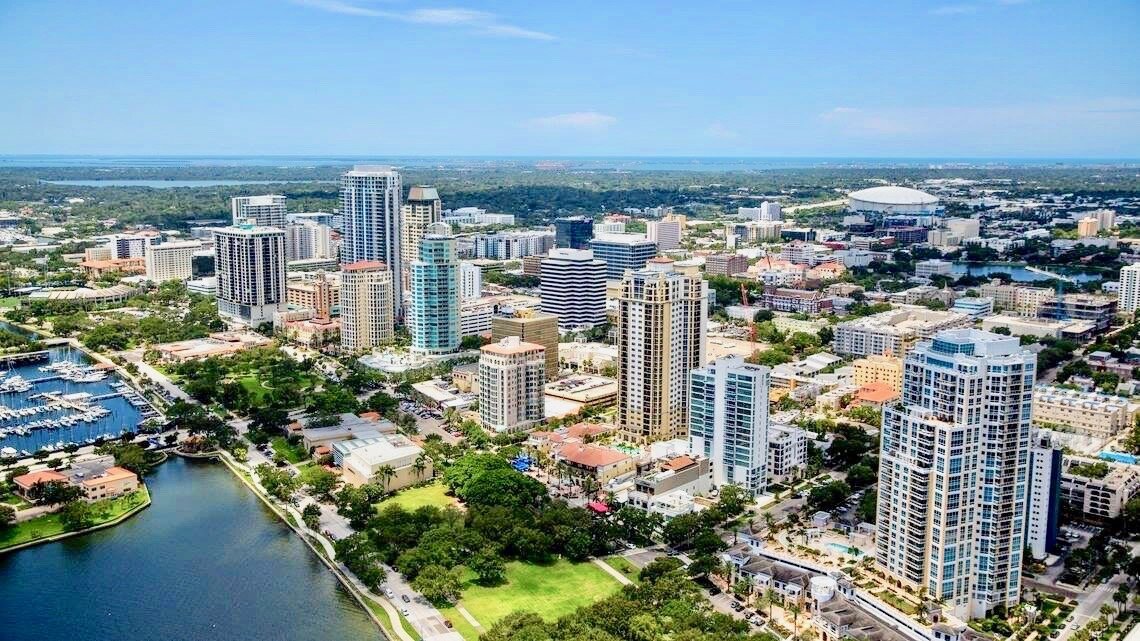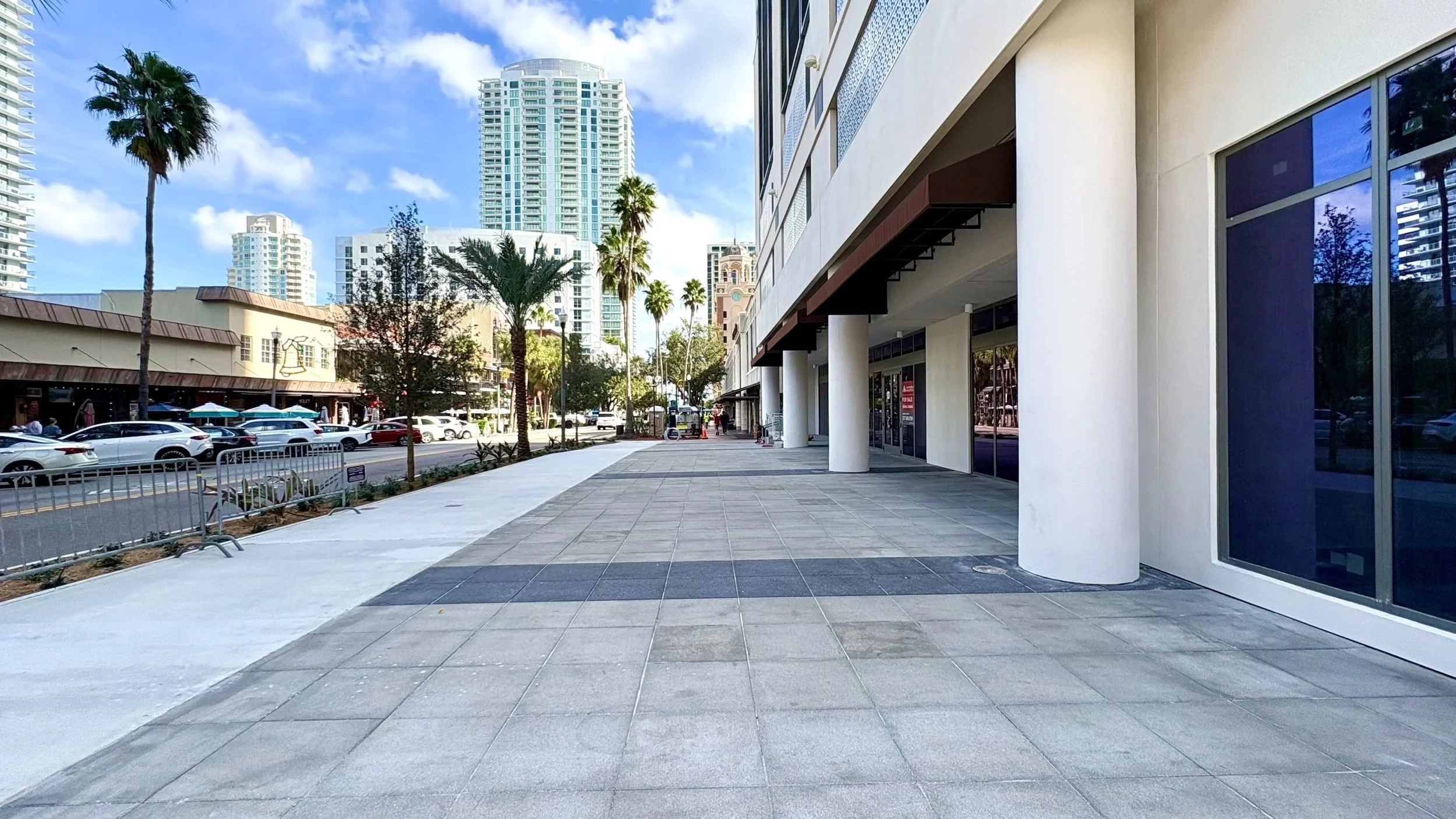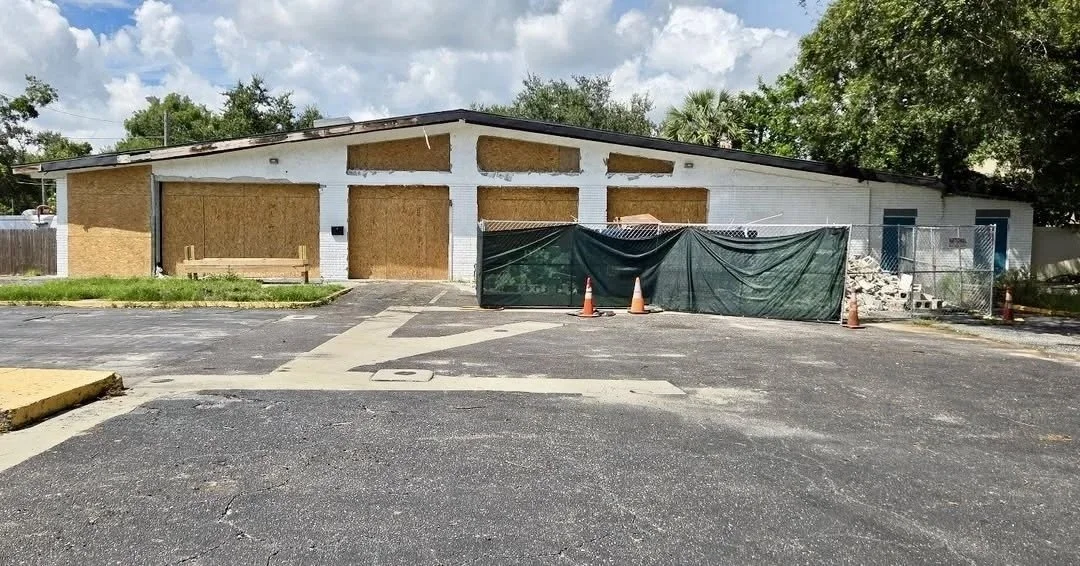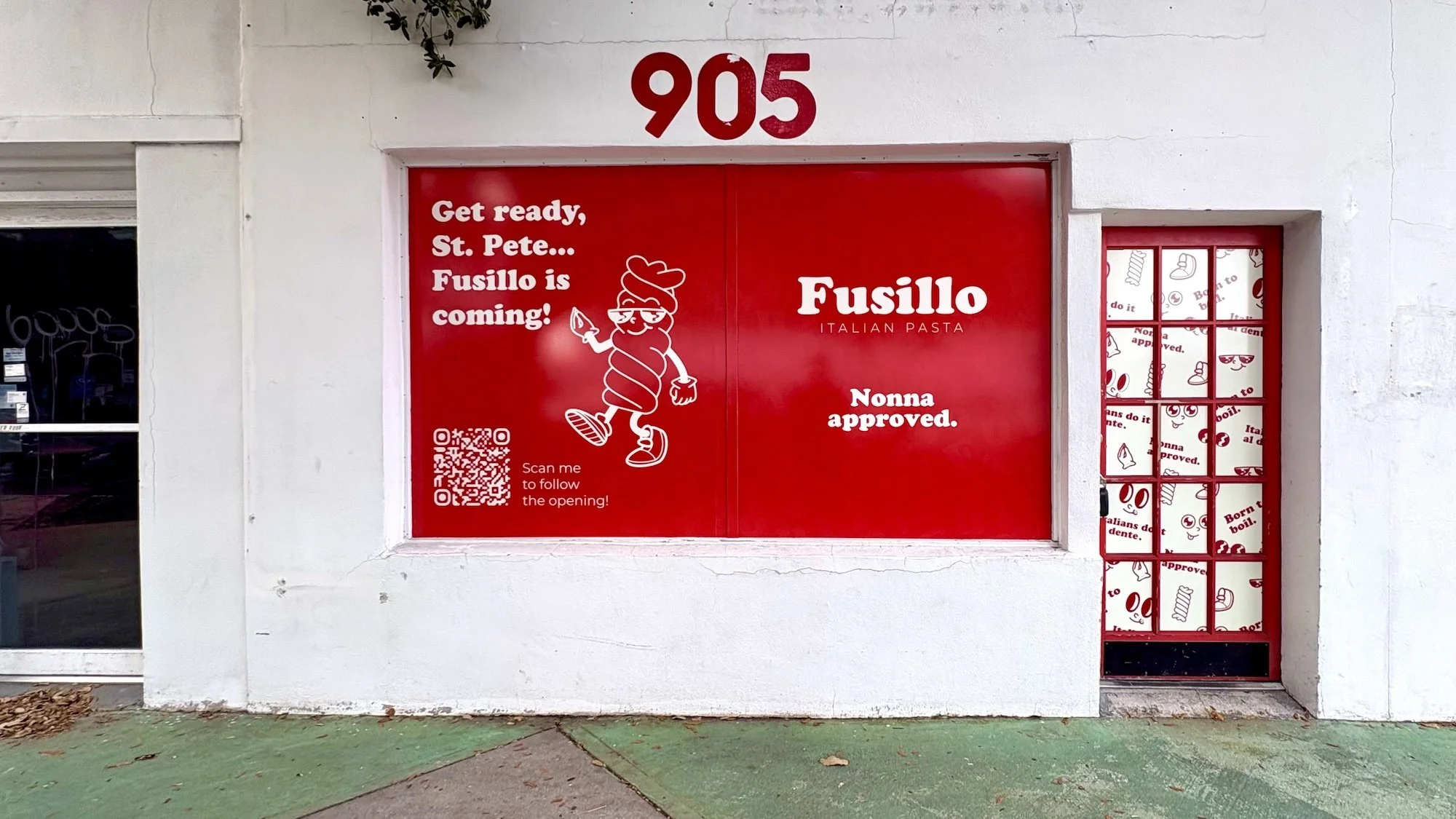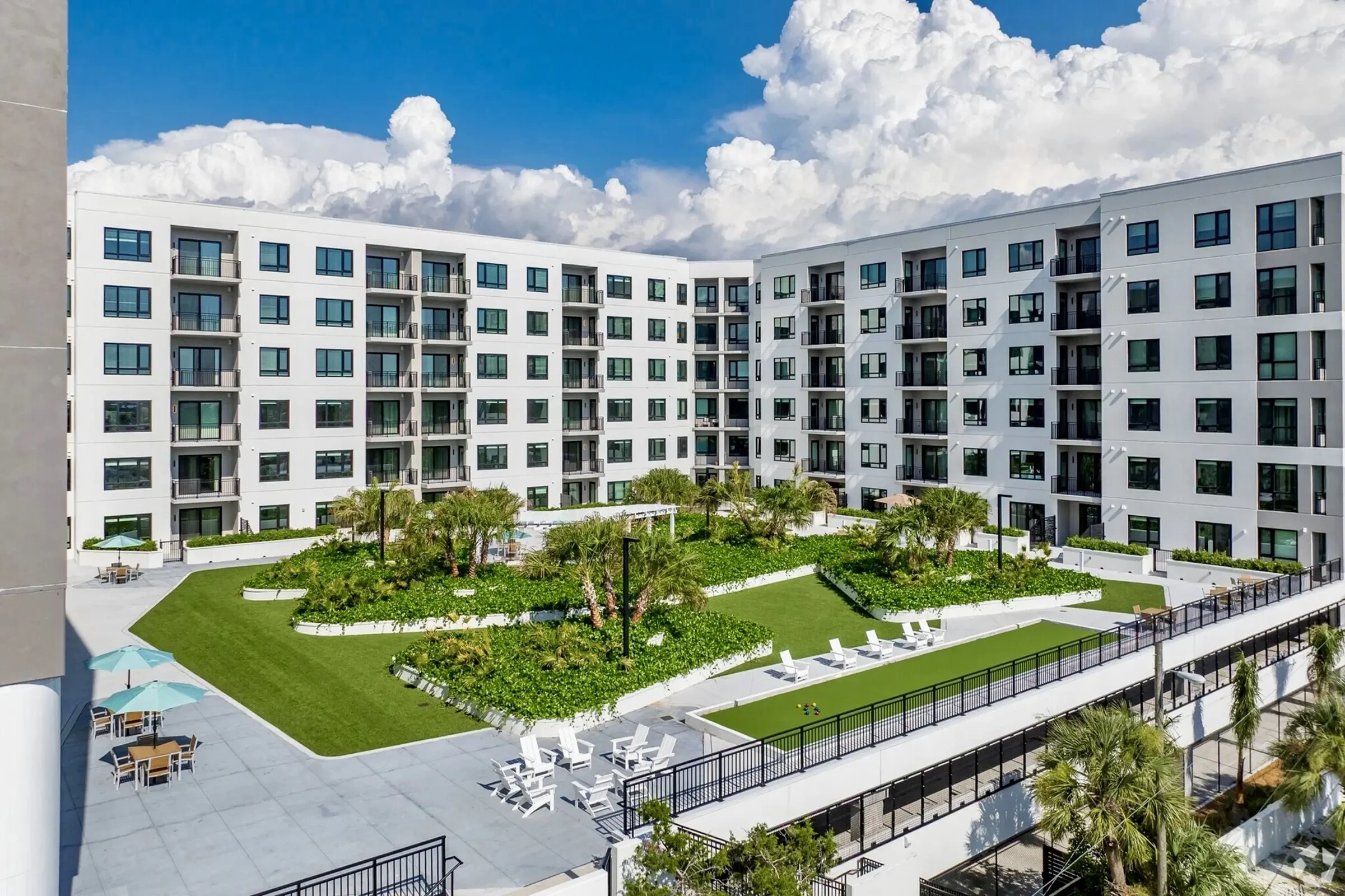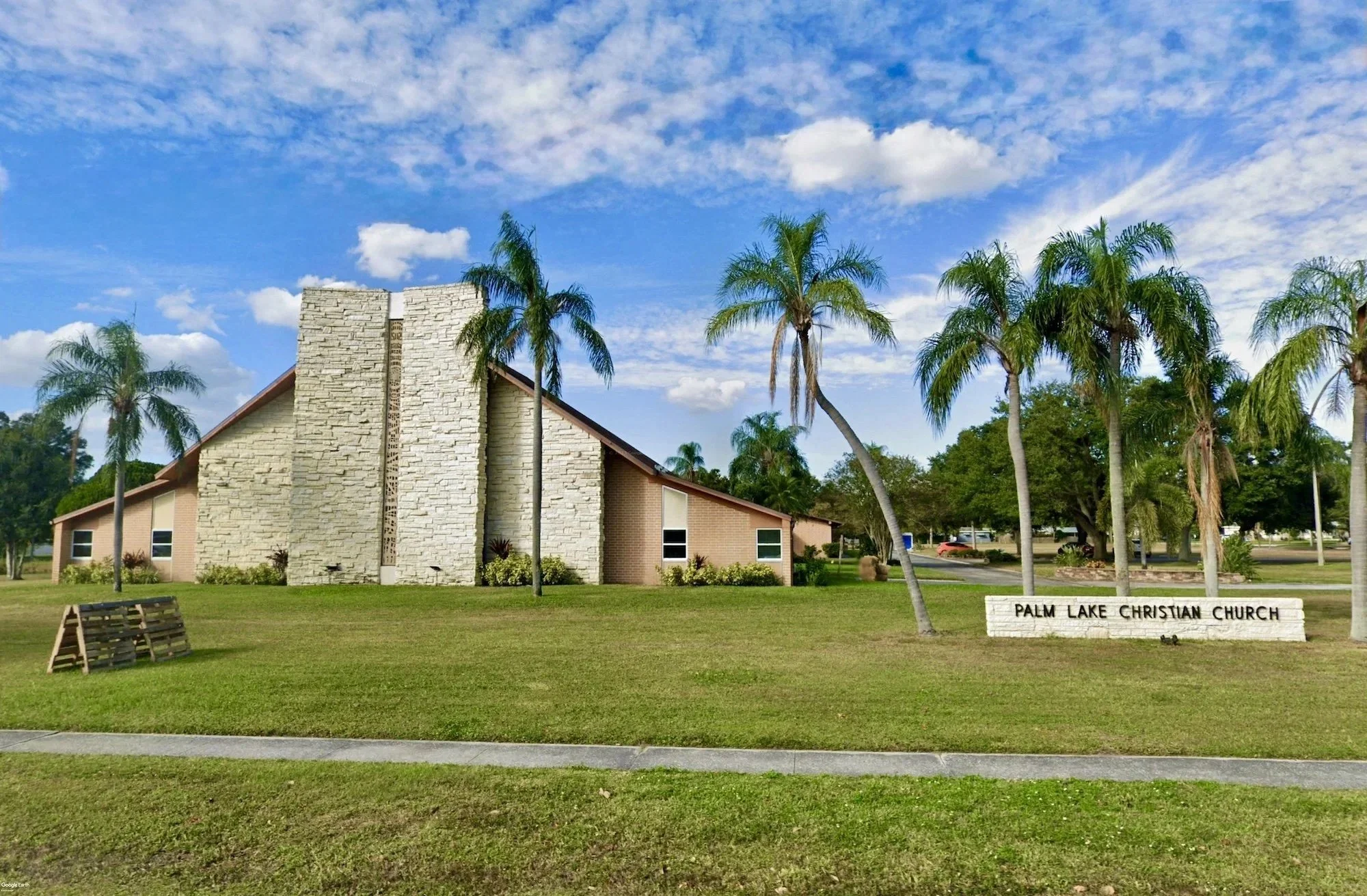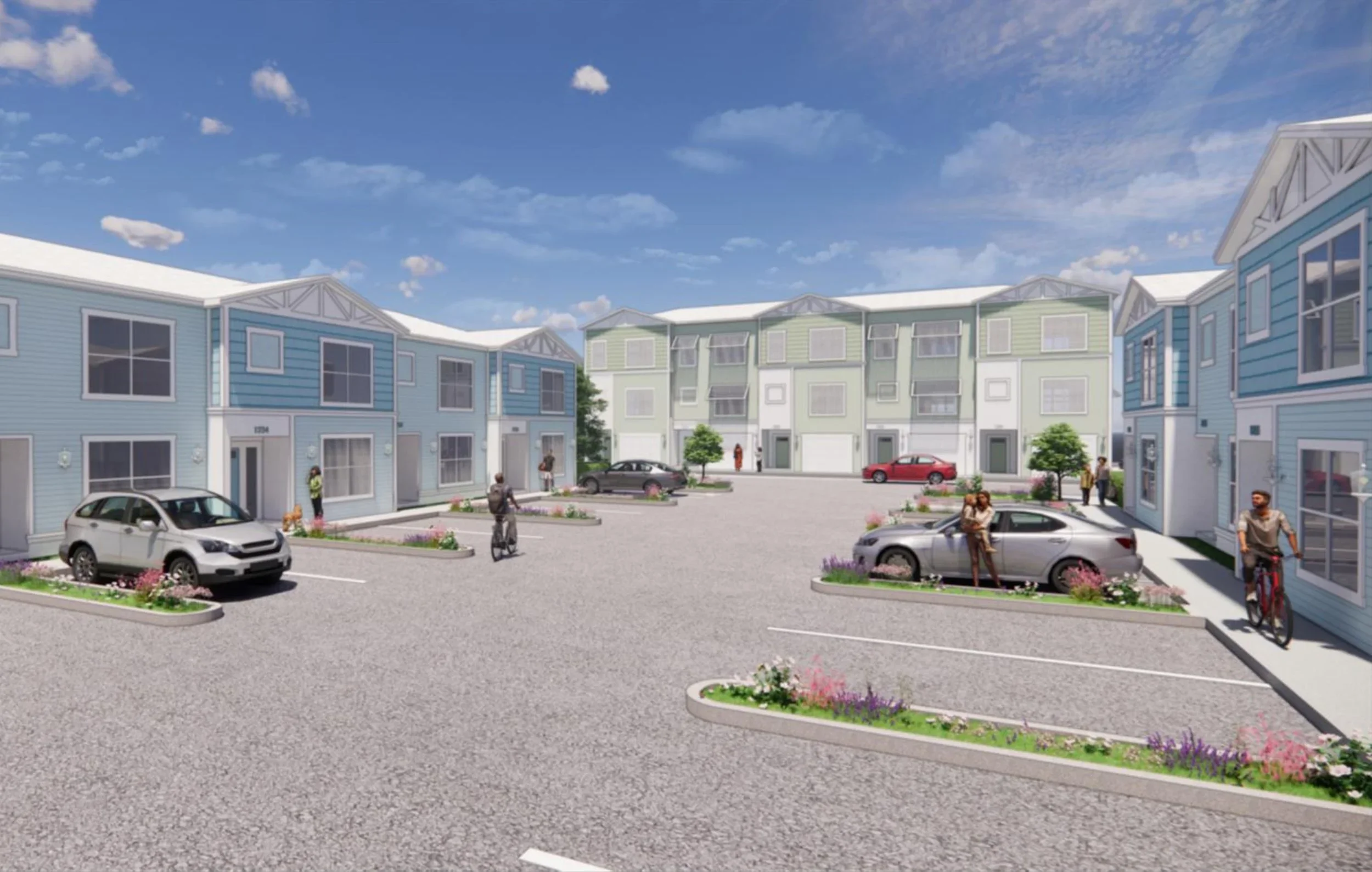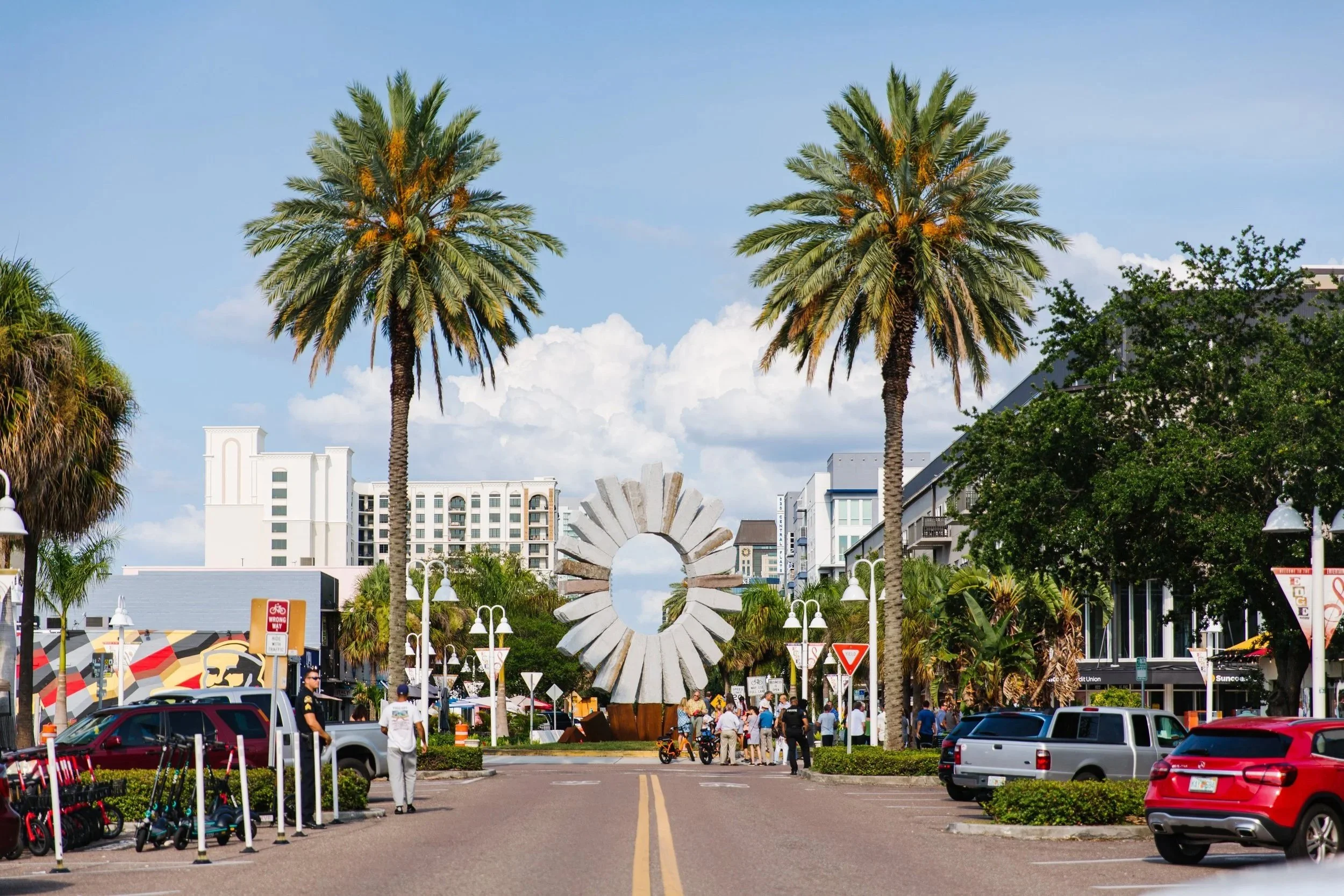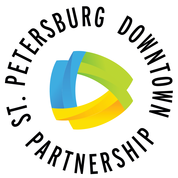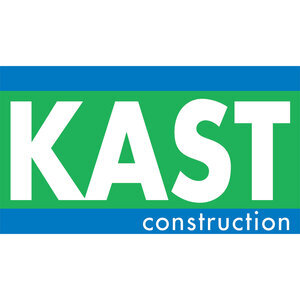Micromobility, a good fit for St Pete!
/Love them or hate them, the scooters have arrived in downtown St. Pete! While it may be too early to say whether this new form of shared transportation is an amenity or a nuisance, they represent only one example of an emerging form of transportation known as micromobility. Cities around the world are scrambling to figure out how to accommodate this growing trend in mobility which has accelerated during the pandemic. Given our great weather and multiple downtown destinations, frequented by residents and tourists alike, St. Petersburg is a natural fit for micromobility. But to fully realize its potential, there is work to be done. We need to rethink and “tame” our car-dominated downtown streets so that all forms of mobility can share the road.
Left: a happy scooter rider in downtown St. Petersburg (photo by M. Huston) Right: hopping a ride with St. Pete Pedicab (photo courtesy of St Pete Pedicab)
What is micromobility?
The exact definition of micromobility is still evolving, but, in general, it includes human or electrically powered personal transportation devices that are light weight and slow moving (relative to cars). These devices include bikes, e-bikes, stand-up scooters, mono-wheels, Segways, skateboards…and that-thing-that-looks-like-a-Stairmaster-which-somehow-propels-you-forward. The term can also be extended to include micro-transit in the form of small electric buses that often operate as autonomous vehicles. And while any form of transportation that moves faster than a walking human can be dangerous in the wrong context, they typically do not carry the lethal force that an impact with an automobile would likely impose.
Why should we accommodate micromobility?
Micromobility can help bridge the mobility gap between pedestrian and car, whether you are a downtown resident, worker, or tourist. For a person that lives downtown, walking distances between home, work and grocery store can be a stretch, especially on a hot summer day. The same goes for tourists, who might find the walk from the Dali Museum to the Pier and back beyond their comfort level – even on a cool winter day. Such trips become much more manageable using these light forms of personal transportation.
Micromobility gives us another alternative to jumping back in the car and driving between destinations.
Cities around the country, and around the world, are realizing that designing streets only for fast moving automobile traffic has an adverse impact on quality of life and safety, especially in dense urban areas. Reducing automobile dependency is good for the environment and good for our mental and physical well-being. That’s why leading cities are transforming their streets to allocate more space for other forms of transportation, including walking and micromobility.
Left: PSTA’s new AVA (Autonomous Vehicle Advantage) is a form of micro-transit that is being tested in downtown St. Petersburg. Right: in the past few years there has been an explosion of personal transportation devices that fall into the category of micromobility. (photos by M. Huston)
How do we safely accommodate micromobility?
My own personal experience on a scooter confirmed that concerns about how they interact safely with pedestrians and cars are real. They are too fast for pedestrians, and too slow and unpredictable to mix well with vehicular traffic. They operate best in bike lanes – bike lanes that are wide enough to accommodate multiple forms of micromobility (not your stingy 4-5 foot bike lanes please!). They also work well on “slow streets” that are designed to induce slower driving speeds, or “shared streets” where there is an intent that all forms of transportation coexist at slow speeds.
Currently, most of our downtown streets prioritize traffic movement at moderate speeds over other forms of mobility. Wide, multi-lane, one-way thoroughfares encourage higher speeds and are not conducive to sharing the road with bikes, scooters, other forms of micromobility, and let’s not forget, pedestrians. Hopefully, some of these issues will be addressed in the Downtown St. Petersburg Mobility Study (insert link) being led by Forward Pinellas. As the National Association of City Transportation Officials (NACTO) recognized in their report on shared micromobility, “To fully realize the potential of shared micromobility, cities must redesign their streets so that everyone has a safe, low-stress network of places to ride.”
BEFORE: A typical before condition that is like many of our streets in downtown St. Petersburg.
AFTER: Illustration of a street that has been transformed and rebalanced to accommodate pedestrians and micromobility. (Illustrations by Steve Price of Urban Advantage)
How do we get there?
Major street transformation will take some time, especially in this era of cash-strapped municipal budgets. But what better time to create a vision and plan for the future!
To minimize the cost of a complete street retrofit (which might involve moving the curb or altering storm drains) temporary retrofits are possible. Entire vehicular lanes can be converted to bike and micromobility lanes using paint and temporary markers and barriers. There can be no doubt that downtown St. Petersburg currently has overdesigned roadways with excessive travel lanes in its downtown, some of which could be appropriated to give scooters and bikes a safe place to operate. It is easier - and more functional - to take a whole travel lane and convert it to bikes and micromobility than it is to take half a lane which requires re-striping of the remaining travel lanes.
a temporary separated bike/micromobility lane installed by the city of St. Petersburg. We need more temporary street retrofits like this. (photo by M. Huston)
By embracing micromobility in a smart and well-planned way, St. Petersburg can continue to be the leader among Florida cities when it comes to quality of life and environmental awareness. But to fully realize this potential, we must make bold plans to rebalance our streets and allocate more space in our public rights-of-ways for this growing segment of mobility.
What can you do now?
As mentioned, Forward Pinellas is currently leading the development of a Downtown St. Petersburg Mobility Study. Earlier this year 500 St. Petersburg residents and visitors took the Downtown St. Petersburg Mobility Survey to share their thoughts on transportation in downtown St. Pete.
Now, Forward Pinellas has opened an online comment board to collect ideas and voices for the development of their mobility plan. The comment board is divided into six areas: Safe Travel, Travel Choice, Access & Connectivity, Travel Experience, Economic Prosperity, and Smart Investments. You can help shape the future of mobility in downtown St. Pete by submitting your own ideas and comments.
Michael Huston is an urban planner and architect. He is a principal at Urban Arts Inc. and Civic Plan Studio and blogs at TheEmpiricalCity.com. His design studio is located on Central Avenue in the Grand Central District. He can be contacted at mh@civicplanstudio.com.
This is a guest post. The views and opinions expressed in guest posts are those of the author and do no necessarily reflect the official position of ‘St. Pete Rising.'
